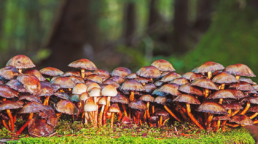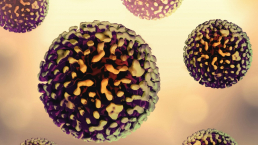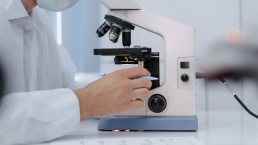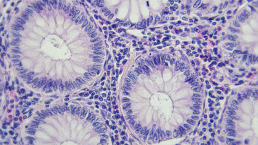
Four Promising Uses for Mycelium
Mycelium is part of the fungi kingdom. It has generated excitement as a promising material for foods, buildings, packaging, and even clothing. Given that resource depletion is an ever-growing issue, this material has enormous potential. Let’s look at the evolution of mycelium research and some of its innovative uses in industry today.
What is mycelium?
Mycelium is the vegetative part, or root structure of mushrooms. It’s made up of filaments called hyphae, which look like thin threads with high tensile strength that create larger networks. They look for nutrients and water to support the main body of fungi and are most often found underground.
Mycelium was around at least 700 to 800 million years ago, as discovered by a research team led by Steeve Bonneville. Research on mycelium has only really taken off in the last sixty years, however. Interestingly, Beatrix Potter – the celebrated children’s author – was captivated by this strange-looking material. Potter’s illustrations of mycelia demonstrated the growth of mycelia underground, representing our fascination with mycelium over 100 years ago.
Uses
Since then, mycelium has been used in a number of products. A study published in Journal of Fungi found that 160 patents were published between 2006 and 2021 for mycelium- and fungi-based products. The growing interest has led to research on its use in clothing, packaging, diet, and construction.
1. An alternative packaging material
Mycelium-based composite (MBC) materials are alternative and biodegradable materials used for packaging. Unlike plastic or foam, which can hang about in the environment for years, MCMs decompose quickly. The composting period is as little as 30 days, meaning MBCs are less likely to generate waste.
As they decompose, mycelia-based composites release nutrients into soil. This makes them even better as single-use packaging alternatives, as they can give back to the environment after use. Waste reduction is important as we look for innovative ways to reduce the harmful effects of waste-producing materials. In 2022, for example, 2.5 billion tons of waste was generated. Packaging materials accounted for almost half of this amount. Hence, a more eco-friendly form of packaging is urgently needed.
Another advantage of MBCs is their low density. The lower density of the packaging means it is more flexible while still possessing a low sensitivity to water damage before fragmentation. Research is still ongoing to find the ideal fungi species to use in mycelium-based packaging. Factors like consumer acceptance and the effects of mycelia lead to complex questions for researchers.
2. Potential building materials
The lifespan of buildings has decreased in the last few decades. For example, the average lifespan of a building in China is 34 years. The decreasing lifespan of buildings is related to factors such as rapid urban renewal. Because recyclable construction materials are formed into irreversible composites, materials used in traditional construction methods are likely to become waste.
MBCs, as low-carbon neutral materials, can be used to create 100% bio-based structures. Because of their high strength, a number of methods have been developed for the fabrication of mycelium structures. Generally, mycelia-based bricks are built by manipulating the process of mycelia growth. They have also been found to have high acoustic absorption, good thermal conductivity, and low density.
Researchers have developed methods to collect mycelia, grow colonies, and create individual brick-like structures. One example is the mycelium-based structure ‘Hy-Fi’, designed by David Benjamin. ‘Hy-Fi’ was built using brick-shaped mycelia-based composited (MCBs). The design won the MoMA PS1’s Young Architects Program award in 2014.
Biocycling is another way that mycelia can be used in construction. Construction materials can be broken down and bound with mycelia so they can be reused in future projects or repairs. The use of these composite materials reduces waste and promotes new methods of recycling.
However, the potential of mycelia in buildings is not just limited to how we think about construction today. Studies show that mycelia can be grown into larger structures that look different from traditional buildings.
3. Mycelium-derived protein
Consuming enough protein can be more challenging on a plant-based diet. However, research on the incorporation of mycelium in foods aims to solve this issue.
Mycelia-based meat alternatives have been around since the 1960s, following the discovery of mycoproteins. Mycoproteins are derived from the mycelia of Fusarium venenatum, a type of microfungus. Fungi-based foods have become popular due to increased awareness of the harm of livestock farming. Compared to the latter, fungi-based foods produce 40–52% less pollution.
To read more about the debates surrounding fungi in food, take a look at the Special Issue ‘Advances in Food Mycology’ in the journal Foods.
4. Mycelium leather
One of the more successful applications of mycelium in textiles is as an alternative to animal leather. Its advantages include its similarity to animal leather, in that mycelium-based leather can be dyed and bleached. It also has a shorter production time. On average, mycelium-leather production requires around five days. This is shorter than for animal leather, which requires between six and eight weeks to produce.
This alternative also resolves ethical concerns related to farming, as mycelium leather alternatives can help to change the way we consume animal products across the globe. Mycelium-based leather can counteract the effects of farming, including increased carbon emissions and deforestation.
Mycelium-based leather alternatives are ideal as they are also biodegradable. Their biodegradable nature makes them a better option than plastic-based leather alternatives. Its advantages are numerous, and future applications are particularly exciting.
Future research
As discussed, mycelium is being used in exciting ways today. In future, we could see more developments in food, clothing and construction industries.
Have a look at our other mushroom-related articles to explore this topic further.










